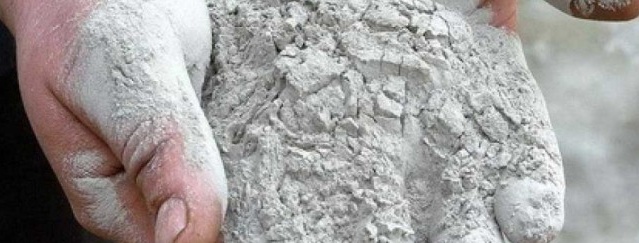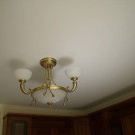Types of cement: properties, composition and application
In the production of cement, lime is used, which is pre-quenched, refined clay and other additional materials that are heated together to a certain temperature (up to 1450 degrees Celsius). Then the resulting mixture is crushed to form a powder. Each type of powder has its own strength, and, accordingly, the cost, which differ from each other.
Types of cement, their quality and composite characteristics:
- lime and slag - contains 30% lime and 5% gypsum;
- phosphate - they contain crushed oxides and phosphoric acid and other compounds that, in a particular connection with each other, produce phosphate hardening - hardening at normal temperature and during heating to 573 K;
- finely ground (TMC) - Portland cement in combination with sand and mineral additives (perlite, limestone, slag, ash and volcanic materials);
- acid resistant - mixtures with soluble glass, an aqueous solution of sodium silicate, acid-resistant fillers for hardening;
- mixed - the main substance in the composition is silicon oxide, plus additives: burnt clay varieties, all kinds of slag, ash substances, especially fuel, gypsum, expanded clay, sedimentary rocks, etc .;
- color - white cement is mixed with pigment powder or dye, or clinker raw materials and chromium oxide, iron oxide or ocher are calcined and grinded together;
- special grouting - joint grinding of triethanolamine, gypsum and clinker;
- masonry - contains 20% of Portland cement clinker, blast furnace slag in the form of granules, ash, quartz, limestone, marble and other mineral materials;
- waterproof non-shrink (VBC) - aluminum oxide, limestone and bauxite are the main ingredients in the composition of such cement;
- alkaline - waste and slag of blast furnaces together with alkalis form a strong and well-hardening building material, which has been on the market for about 40 years and is still not inferior to other types of cement in the breadth of application;
- Turkish - it contains 59% of SZ of silicate and aluminate; it has unique aesthetic and operational properties of white cement; it is gaining more and more popularity recently;
- Chinese - Portland cement with mineralization and additives of various impurities (alumina, mineral, etc.);
- Portland cement slag - slags in combination with alkaline activators or anhydrite are fired according to a certain technology, it is very popular and wide in use;
- sulfate resistant - ordinary cement enriched with modifying additives, which give greater strength and strength to concrete products;
- expanding - its main property is to increase in volume during hardening in air due to certain hydraulic substances;
- pozzolanic - a mixture that is an astringent hydraulic substance that hardens when exposed to water or moisture;
- plasticized - a very plastic, but durable substance, which has such properties due to specific additives giving the plastic mixture;
- sandy - cement clinker is mixed in grinding with gypsum, sand and quartz, autoclave hardening;
- annoying - a mixture that has hydraulic and expanding properties, is very resistant to corrosion, low temperatures and water;
- magnesia cement - the main substance of such cement is magnesium oxide, which is closed by chlorides together with magnesium sulfates, is durable and moisture resistant;
- carbonate - It is made on the basis of clay or siderite carbonate rocks, plus 25-30% of limestone or dolomite;
- aluminous - limestone or any other substances with alumina is a very good binder;
- hydrophobic - Portland cement with hydrophobic additives (asidol, soaponaft, oleic acid, synthetic fatty acids or their residues and oxidized petrolatum) has high water and air impermeability;
- waterproof expandable - a mixture made by grinding alumina cement with hydroaluminate of calcium and gypsum, a pronounced increase in volume during solidification;
- quick hardening - due to the presence of a certain percentage of additives in such cement, it has the highest rates of rapid solidification;
- white - this color of mixtures is obtained due to kaolin, a special rock of porcelain clay and chalk, which give the cement versatility, because it can be mixed with dry paints, putties and plasters without losing its high strength properties;
- composite portland cement - contains mineral additives that improve strength, frost and moisture resistance;
- white portland cement - contains a high percentage of silicate and aluminous substances, which significantly increases its operational and quality characteristics, such as, for example, strength and water resistance.
Some popular types of cement and their application
Phosphate cement is used where resistance to elevated atmospheric temperatures or adhesion to various other materials is required. They successfully fulfill the protective role of various designs, including metal ones.
Fine-ground cement (TMC) is used for the manufacture of concrete or reinforced concrete products, as well as monolithic structures. It tolerates additives of binders, which further increases its strength, hardening, water resistance and other qualities.
Acid-resistant cement is used as a protection of chemical equipment from the influence of acid-containing preparations or substances. It has partial moisture resistance.
Mixed cements are most often used for the construction of underwater or underground structures, roads, and sanitary and technical cabins are made from these materials.
Masonry cement is most suitable for plastering, tile or masonry work. However, it is imperative to add various additives and necessary components to them.
As can be seen from the brief overview, there are a lot of types of cements, therefore, to make the right and the right choice of this or that material, you should always take into account its direct purpose, and then, if possible, enrich or improve this other type of cement with various additives or additional mixtures. Another requirement for effective work with cement, selection of brand and variety may be the consideration of all the nuances that may arise during the future operation of the room. This is moisture resistance, temperature changes and acid resistance and many others, which can significantly affect the quality of wear of a particular cement surface.



